Apps
Auto Added by WPeMatico
Auto Added by WPeMatico
How can you be sure an image wasn’t Photoshopped? Make sure it was shot with Truepic. This startup makes a camera feature that shoots photos and adds a watermark URL leading to a copy of the image it saves, so viewers can compare them to ensure the version they’re seeing hasn’t been altered.
Now Truepic’s technology is getting its most important deployment yet as the way Reddit will verify that Ask Me Anything Q&As are being conducted live by the actual person advertised — oftentimes a celebrity.
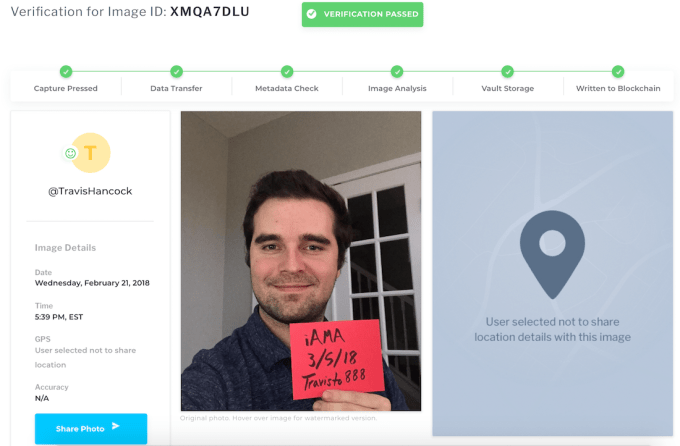
But beyond its utility for verifying AMAs, dating profiles and peer-to-peer e-commerce listings, Truepic is tackling its biggest challenge yet: identifying artificial intelligence-generated Deepfakes. These are where AI convincingly replaces the face of a person in a video with someone else’s. Right now the technology is being used to create fake pornography combining an adult film star’s body with an innocent celebrity’s face without their consent. But the big concern is that it could be used to impersonate politicians and make them appear to say or do things they haven’t.
The need for ways to weed out Deepfakes has attracted a new $8 million round for Truepic. The cash comes from untraditional startup investors, including Dowling Capital Partners, former Thomson Financial (which become Reuters) CEO Jeffrey Parker, Harvard Business school professor William Sahlman and more. The Series A brings Truepic to $10.5 million in funding.
“We started Truepic long before manipulated images impacted democratic elections across the globe, digital evidence of atrocities and human rights abuses were regularly undermined, or online identities were fabricated to advance political agendas — but now we fully recognize its impact on society,” says Truepic founder and COO Craig Stack. “The world needs the Truepic technology to help right the wrongs that have been created by the abuse of digital imagery.”
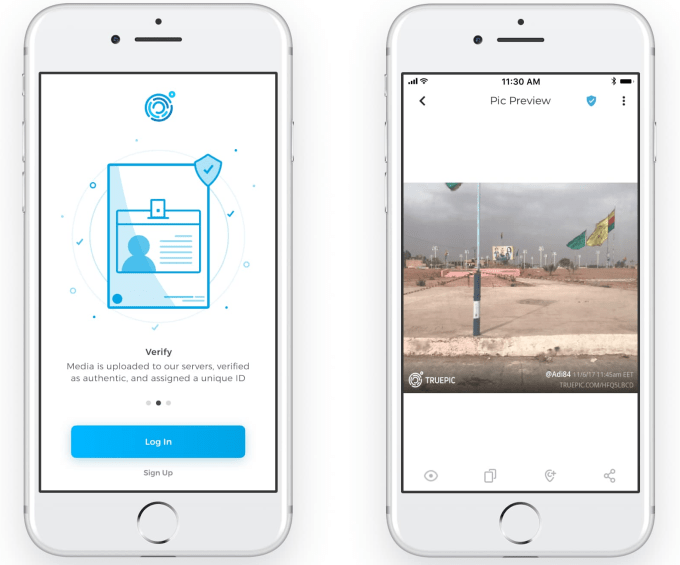
Here’s how Truepic works:
For example, Reddit’s own Wiki recommends that AMA creators use the Truepic app to snap a photo of them holding a handwritten sign with their name and the date on it. “Truepic’s technology allows us to quickly and safely verify the identity and claims for some of our most eccentric guests,” says Reddit AMA moderator and Lynch LLP intellectual property attorney Brian Lynch. “Truepic is a perfect tool for the ever-evolving geography of privacy laws and social constructs across the internet.”

The abuses of image manipulation are evolving, too. Deepfakes could embarrass celebrities… or start a war. “We will be investing in offline image and video analysis and already have identified some subtle forensic techniques we can use to detect forgeries like deepfakes,” Truepic CEO Jeff McGregor tells me. “In particular, one can analyze hair, ears, reflectivity of eyes and other details that are nearly impossible to render true-to-life across the thousands of frames of a typical video. Identifying even a few frames that are fake is enough to declare a video fake.”
This will always be a cat and mouse game, but from newsrooms to video platforms, Truepic’s technology could keep content creators honest. The startup has also begun partnering with NGOs like the Syrian American Medical Society to help it deliver verified documentation of atrocities in the country’s conflict zone. The Human Rights Foundation also trained humanitarian leaders on how to use Truepic at the 2018 Freedom Forum in Oslo.
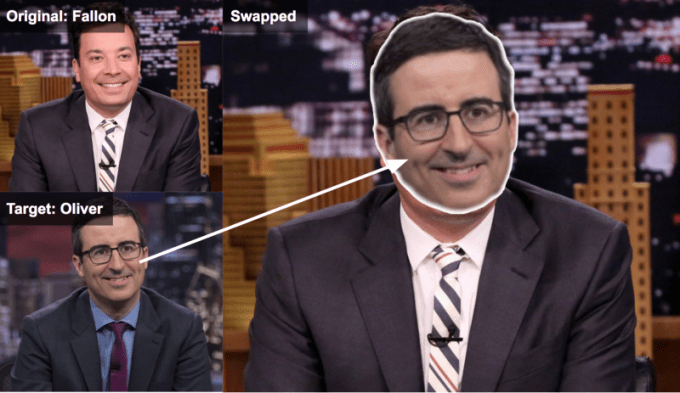
Throwing shade at Facebook, McGregor concludes that “The internet has quickly become a dumpster fire of disinformation. Fraudsters have taken full advantage of unsuspecting consumers and social platforms facilitate the swift spread of false narratives, leaving over 3.2 billion people on the internet to make self-determinations over what’s trustworthy vs. fake online… we intend to fix that by bringing a layer of trust back to the internet.”
Powered by WPeMatico
Mobile app subscriptions are a big business, but consumers sometimes hesitate to sign up because pausing and cancelling existing subscriptions hasn’t been as easy as opting in. Google is now addressing those concerns with the official launch of its subscription center for Android users. The new feature centralizes all your Google Play subscriptions, and offers a way for you to find others you might like to try.
The feature was first introduced at Google’s I/O developer conference in May, and recently rolled out to Android users, the company says. However, Google hadn’t formally announced its arrival until today.
Access to the subscriptions center only takes one tap – the link is directly available from the “hamburger” menu in the Play Store app.

Apple’s page for subscription management, by comparison, is far more tucked away.
On iOS, you have to tap on your profile icon in the App Store app, then tap on your name. This already seem unintuitive – especially considering that a link to “Purchases” is on this Account screen. Why wouldn’t Subscriptions be here, too? But instead, you have to go to the next screen, then scroll down to near the bottom to find “Subscriptions” and tap that. To turn any individual subscription off, you have to go to its own page, scroll to the bottom and tap “Cancel.”
This process should be more streamlined for iOS users.
In Google Play’s Subscriptions center, you can view all your existing subscriptions, cancel them, renew them, or even restore those you had previously cancelled – perfect for turning HBO NOW back on when “Game of Thrones” returns, for example.
You can also manage and update your payment methods, and set up a backup method.
Making it just as easy for consumers to get out of their subscriptions as it is to sign up is a good business practice, and could boost subscription sign-ups overall, which benefits developers. When consumers aren’t afraid they’ll forget or not be able to find the cancellation options later on, they’re more likely to give subscriptions a try.
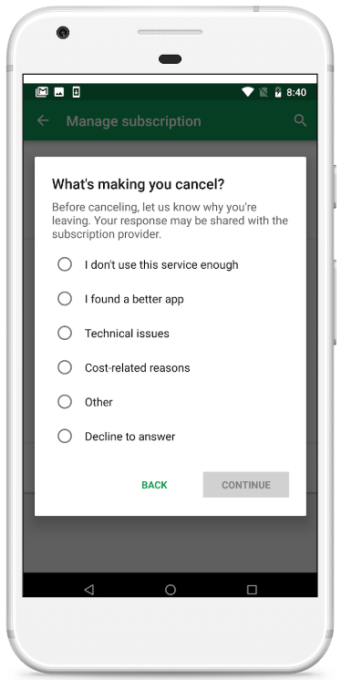
In addition, developers can now create deep links to their subscriptions which they can distribute across the web, email, and social media. This makes it easier to direct people to their app’s subscription management page directly. When users cancel, developers can also trigger a survey to find out why – and possibly tweak their product offerings a result of this user feedback.
There’s also a new subscription discovery section that will help Android users find subscription-based apps through both curated and localized collections, Google notes.
These additional features, along with a good handful of subscription management tools for developers, were all previously announced at I/O but weren’t in their final state at the time. Google had cautioned that it may tweak the look-and-feel of the product between the developer event and the public launch, but it looks the same as what was shown before – right down to the demo subscription apps.
Subscriptions are rapidly becoming a top way for developers to generate revenue for their applications. Google says subscribers are growing at more than 80 percent year-over-year. Sensor Tower also reported that app revenue grew 35 percent to $60 billion in 2017, in part thanks to the growth in subscriptions.
Powered by WPeMatico
Instagram’s meteoric rise continues, dwarfing the stagnant growth rates of Snapchat and Facebook. Today Instagram announced that it has reached 1 billion monthly active users, after passing 800 million in September 2017 with 500 million daily users.
That massive audience could be a powerful draw for IGTV, the longer-form video hub it’s launching for creators today. While IGTV monetization options are expected in the future, content makers may flock to it early just to get exposure and build their fan base.
While Snapchat’s daily user count grew just 2.13 percent in Q1 2018 to 191 million, and Facebook’s monthly count grew 3.14 percent to reach 2.196 billion, Instagram is growing closer to 5 percent per quarter.
Hitting the 1 billion user milestone could put pressure on Instagram to carry its weight in the Facebook family and bring home more cash. Facebook doesn’t break out Instagram’s revenue and has never given any guidance about it. But eMarketer estimates that Instagram will generate $5.48 billion in U.S. ad revenue in 2018, up 70 percent from last year. It reports that Instagram makes up 28.2 pecent of Facebook’s mobile ad revenue.
IGTV could open even more premium mobile ad inventory that traditional television advertisers crave, which helped push Facebook’s share price up more that 2.2 precent to $202.
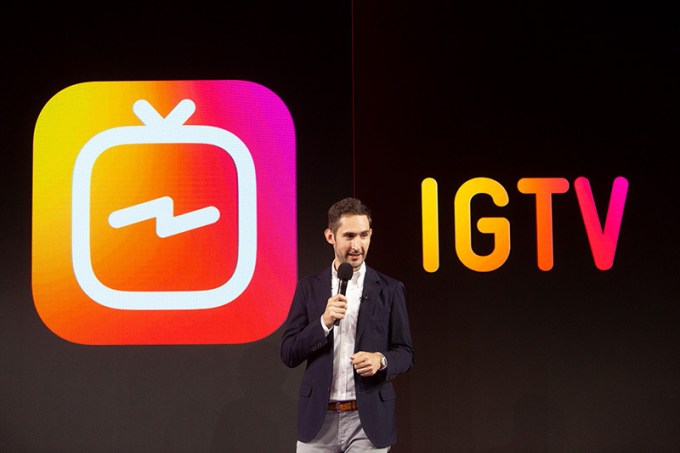
The Instagram brand increasingly looks like Facebook’s life raft. Sentiment toward Facebook, especially amongst teens, has been in decline, and it’s constantly rocked by privacy scandals. But many users don’t even realize Facebook owns Instagram, and still love the photo-sharing app. With the 1 billion user badge, businesses and content creators may take the photo and video app even more seriously. Selling windows into your friends’ worlds is a lucrative business.
Powered by WPeMatico
Instagram is ready to compete head-on with YouTube. Today at a flashy event in San Francisco, the company announced it will begin allowing users to upload videos up to one hour in length, up from the previous one-minute limit. And to house the new longer-form videos from content creators and the general public, Instagram is launching IGTV. Accessible from a button inside the Instagram homescreen, as well as a standalone app, IGTV will spotlight popular videos from Instagram celebrities.
The launch confirms TechCrunch’s scoops over the past month outlining the features and potential of IGTV that we said would arrive today, following the WSJ’s report that Instagram would offer videos up to an hour in length.
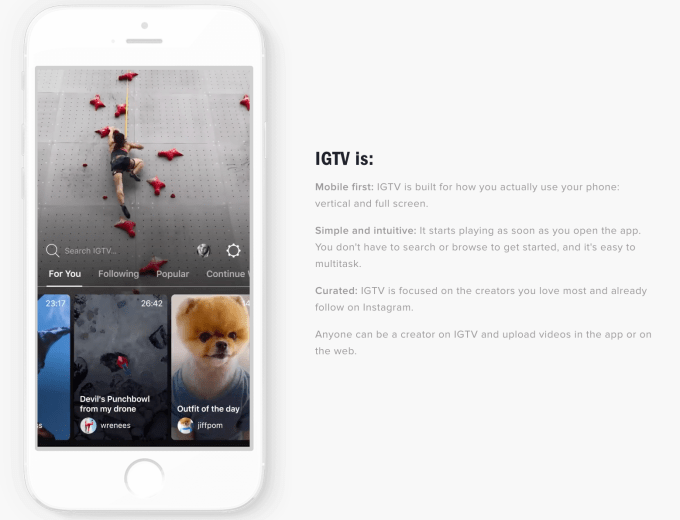
“It’s time for video to move forward, and evolve,” said Instagram CEO Kevin Systrom onstage at the event. “IGTV is for watching long-from videos from your favorite creators.” Just before he took the stage, Instagram’s business blog outed details of IGTV.
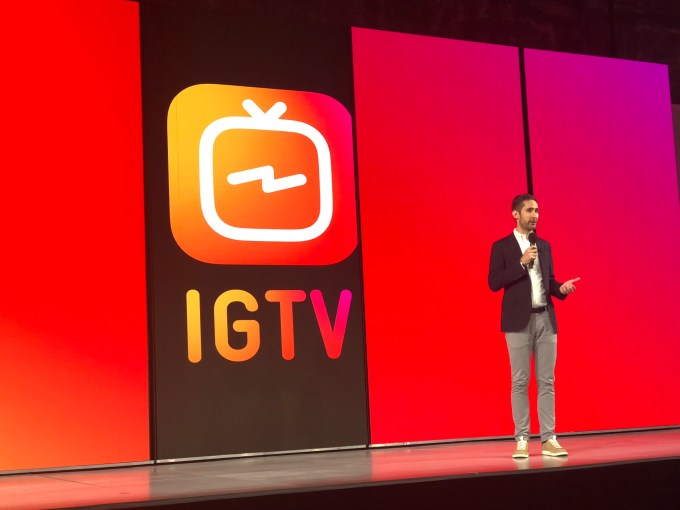
Kevin Systrom onstage at the IGTV launch
IGTV will let anyone be a creator, not just big-name celebrities. People will be able to upload vertical videos through Instagram’s app or the web. Everyone except smaller and new accounts will be able to upload hour-long videos immediately, with that option expanding to everyone eventually.
The IGTV app will be available globally on iOS and Android sometime today, as well as in the Instagram app through a TV shaped button above Stories. “We made it a dedicated app so you can tap on it and enjoy video without all the distraction,” Systrom explained.
In IGTV’s dedicated app or its in-Instagram experience, viewers will be able to swipe through a variety of longer-form videos, or swipe up to visit a Browse tab of personally recommended videos, popular videos, creators they’re following and the option to continue watching previously started videos. Users will also get callouts from the IGTV button alerting them to new content.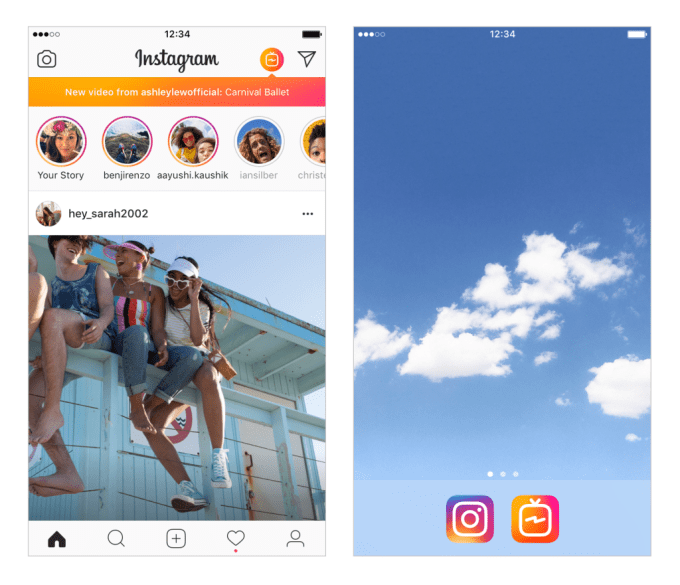
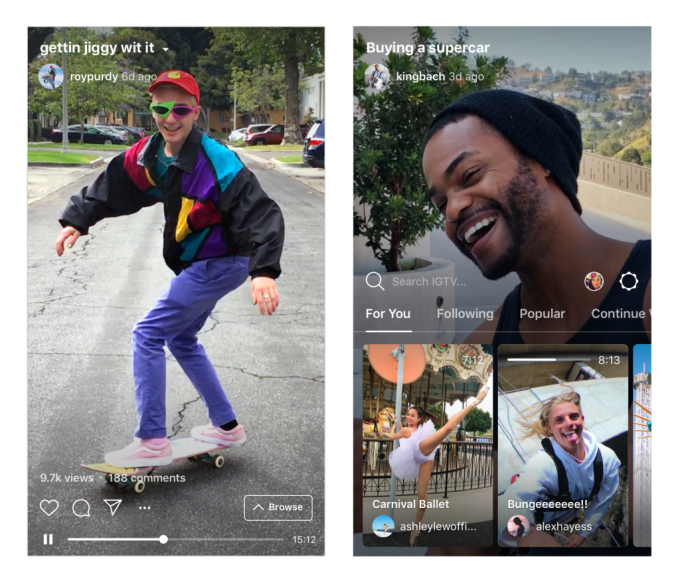 IGTV will also let creators develop Instagram Channels full of their different videos that people can subscribe to. Creators will be able to put links in the description of their videos to drive traffic elsewhere.
IGTV will also let creators develop Instagram Channels full of their different videos that people can subscribe to. Creators will be able to put links in the description of their videos to drive traffic elsewhere.
“There’s no ads in IGTV today,” says Systrom, but he says it’s “obviously a very reasonable place [for ads] to end up.” He explained that since creators are investing a lot of time into IGTV videos, he wants to make that sustainable by offering them a way to monetize in the future. Instagram isn’t paying any creators directly for IGTV videos either, like Facebook did to jump-start its flopped Facebook Watch video hub.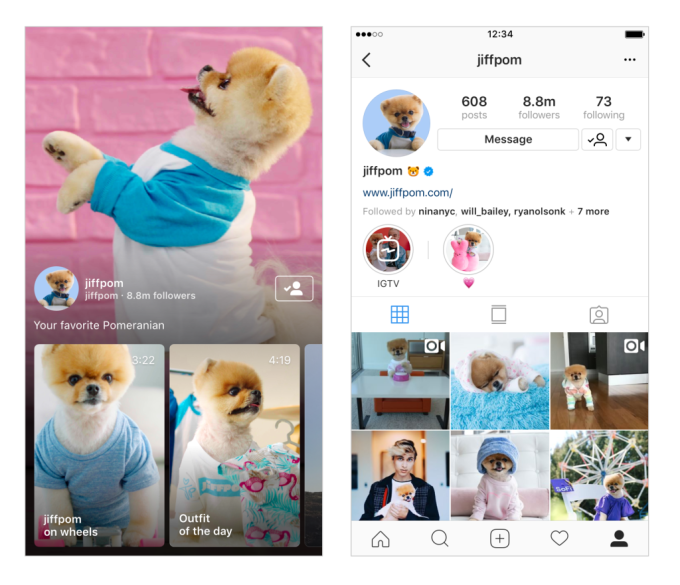 With 1 billion users on Instagram, IGTV could be popular with creators not only trying to earn money but grow their audience. Instagram is expected to build out a monetization option for IGTV creators, potentially including ad revenue shares. The big user base could also attract advertisers. eMarketer already expects Instagram to earn $5.48 billion in U.S. ad revenue in 2018. Facebook shareholders loved the sound of more premium ad inventory that businesses crave as they shift spend away from television. Facebook’s share price is up over 2.2 percent today to nearly $202.
With 1 billion users on Instagram, IGTV could be popular with creators not only trying to earn money but grow their audience. Instagram is expected to build out a monetization option for IGTV creators, potentially including ad revenue shares. The big user base could also attract advertisers. eMarketer already expects Instagram to earn $5.48 billion in U.S. ad revenue in 2018. Facebook shareholders loved the sound of more premium ad inventory that businesses crave as they shift spend away from television. Facebook’s share price is up over 2.2 percent today to nearly $202.
Instagram has evolved far beyond the initial simplicity of just filtering and sharing photos. When it launched, mobile networks, screens and cameras weren’t ready for longer-form video, and neither were users. As more families cut the cord or teens ignore television altogether, though, Instagram has an opportunity to become the TV of mobile. YouTube may always have a wider breadth of content, but through curation of creators and publishers’ video content, Instagram could become the reliable place to watch something great on the small screen.
Powered by WPeMatico
Facebook is starting to let Group admins charge $4.99 to $29.99 per month for access to special sub-Groups full of exclusive posts. A hand-picked array of parenting, cooking and “organize my home” Groups will be the first to get the chance to spawn a subscription Group open to their members.
During the test, Facebook won’t be taking a cut, but because the feature bills through iOS and Android, those operating systems get their 30 percent cut of a user’s first year of subscription and 15 percent after that. But if Facebook eventually did ask for a revenue share, it could finally start to monetize the Groups feature that’s grown to more than 1 billion users.

The idea for subscription Groups originally came from the admins. “It’s not so much about making money as it is investing in their community,” says Facebook Groups product manager Alex Deve. “The fact that there will be funds coming out of the activity helps them create higher-quality content.” Some admins tell Facebook they actually want to funnel subscription dues back into activities their Group does together offline.
Content users might get in the exclusive version of groups includes video tutorials, lists of tips and support directly from admins themselves. For example, Sarah Mueller’s Declutter My Home Group is launching a $14.99 per month Organize My Home subscription Group that will teach members how to stay tidy with checklists and video guides. The Grown and Flown Parents group is spawning a College Admissions and Affordability subscription group with access to college counselors for $29.99. Cooking On A Budget: Recipes & Meal Planning will launch a $9.99 Meal Planning Central Premium subscription group with weekly meal plans, shopping lists for different grocery stores and more.
But the point of the test is actually to figure out what admins would post and whether members find it valuable. “They have their own ideas. We want to see how that is going to evolve,” says Deve.

Here’s how subscription Groups work. First, a user must be in a larger group where the admin has access to the subscription options and posts an invitation for members to check it out. They’ll see preview cards outlining what exclusive content they’ll get access to and how much it costs. If they want to join, and they’re already an approved member of larger free group, they’re charged the monthly fee right away.
They’ll be billed on that date each month, and if they cancel, they’ll still have access until the end of their billing cycle. That prevents anyone from joining a group and scraping all the content without paying the full price. The whole system is a bit similar to subscription patronage platform Patreon, but with a Group and its admin at the center instead of some star creator.
Back in 2016, Facebook briefly tested showing ads in Groups, but now says that was never rolled out. However, the company says that admins want other ways beyond subscriptions to build revenue from Groups and it’s considering the possibilities. Facebook didn’t have any more to share on this, but perhaps one day it will offer a revenue split from ads shown within groups.
Between subscriptions, ad revenue shares, tipping, sponsored content and product placement — all of which Facebook is testing — creators are suddenly flush with monetization options. While we spent the last few decades of the consumer internet scarfing up free content, creativity can’t be a labor of love forever. Letting creators earn money could help them turn their passion into their profession and dedicate more time to making things people love.
Powered by WPeMatico
Just a few years ago, it might have been a bit of a challenge to convince investors that a mindfulness app would end up being a big business — but thanks to an increasing focus on mental health from both startups and larger companies, companies like Calm are now capturing the excitement of investors.
From meditation sessions like you might find on other apps to tracks called “sleep stories” designed to help people get control of their sleep, Calm serves as a suite of content for users focusing on mental wellness. It’s one of an increasingly hot space centered around mental wellness and maintaining a sort of mindfulness in the hope that it’ll convert into a daily habit and help people just generally feel, well, more calm. The company says it has raised $27 million in a new financing round that values it at a $250 million pre-money led by Insight Venture Partners with Ashton Kutcher’s Sound Ventures also participating. Before this, Calm raised around $1.5 million in seed funding.
“There’s definitely a bias toward the physical body in fitness,” co-founder Michael Acton Smith said. “For a long time there’s been a certain amount of embarrassment and shame talking about our own feelings. A lot of people are realizing that we’re all, at different times, going through tough times. I think that’s part of the culture we’ve grown up in. Everything’s been about improving the efficiency and improving the effectiveness and the external circumstances. We haven’t considered the internal circumstances the same way. The same thing isn’t true of eastern philosophies. This crossover is just beginning to happen in a big way.”
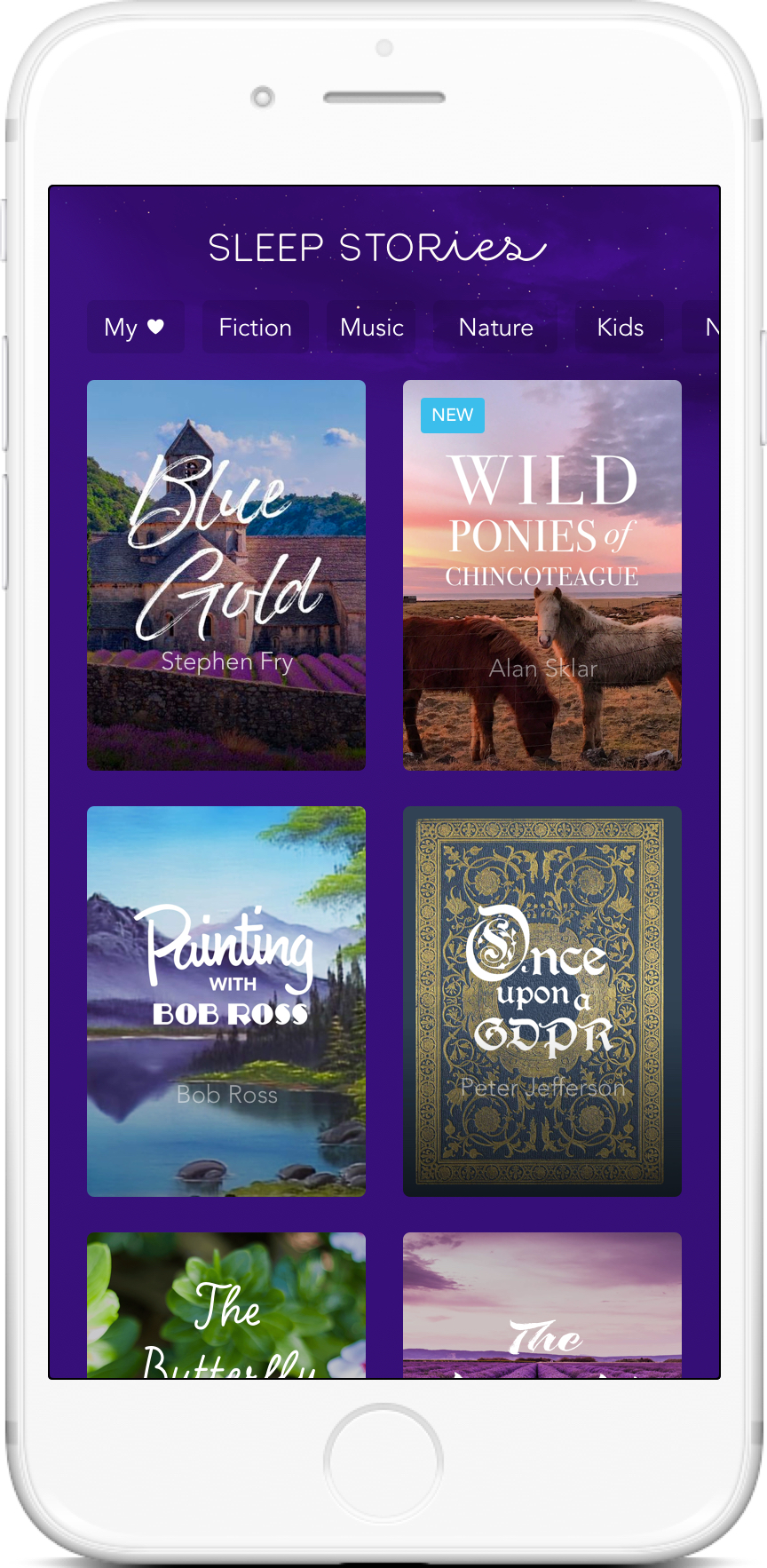
Calm, at its core, is a hub of content centered around mindfulness ranging from in-the-moment sessions to tracks that are designed to soothing enough to help people get ready to go to sleep. Everything boils down to trying to help teach users mindfulness, which is in of itself a skill that requires training, co-founder Alex Tew said. This itself has morphed into a business in of itself, with the company generating $22 million in revenue in 2017 and reaching an annual revenue run rate of $75 million.
And the more content the company creates, and the more people come back, the more data it acquires on what’s working and what isn’t. Like any other tech tool or service, some of the content resonates with users and some doesn’t, and the startup looks to employ the same rigor that many other companies with a heavy testing culture to ensure that the experience is simple for users that will jump in and jump out. For example, it turns out a voice named Eric reading stories about being on a train struck a chord with users — so the company invested more in Eric.
“It’s a tricky balance,” Tew said. “Sometimes we’ll launch things that we think are popular but don’t end up being popular, but there’s never been any kind of dramatic errors. We try to create content that will appeal to the biggest range of users. We speak to our customers and find out what they would like.”
Calm’s focus is built off of an increasingly important topic the technology industry is grappling with — mental health. As more and more users pick up Calm and start listening to the tracks, the company can start to figure out what kinds of sessions or tools are helping people want to come back more often and, in theory, start feeling better with those kinds of practices. If you talk to investors in the valley, helping founders manage the highs and lows of starting a company is increasingly part of the discussion, with the refrain that ‘people are at least talking about it now’ showing up more and more often. That’s also helping companies like Calm and Headspace attract funding from the venture community.
“It does feel like a major societal shift,” Acton Smith said. “Just a few years ago no one talked about mental health, it was very much in the shadows. As more politicians talk about it, as the media treat it as something normal and healthy to do, more and more people step out of the shadows and into the light. We realize the brain is pretty much the most complex thing in the known universe, it’s not surprising it goes wrong every now and then. To be able to talk about that and understand it is a very healthy and positive thing. It just feels like we’re at the start, 50 years ago the wave began around physical fitness, jogging, aerobics, and now we’re at the start of this new wave.
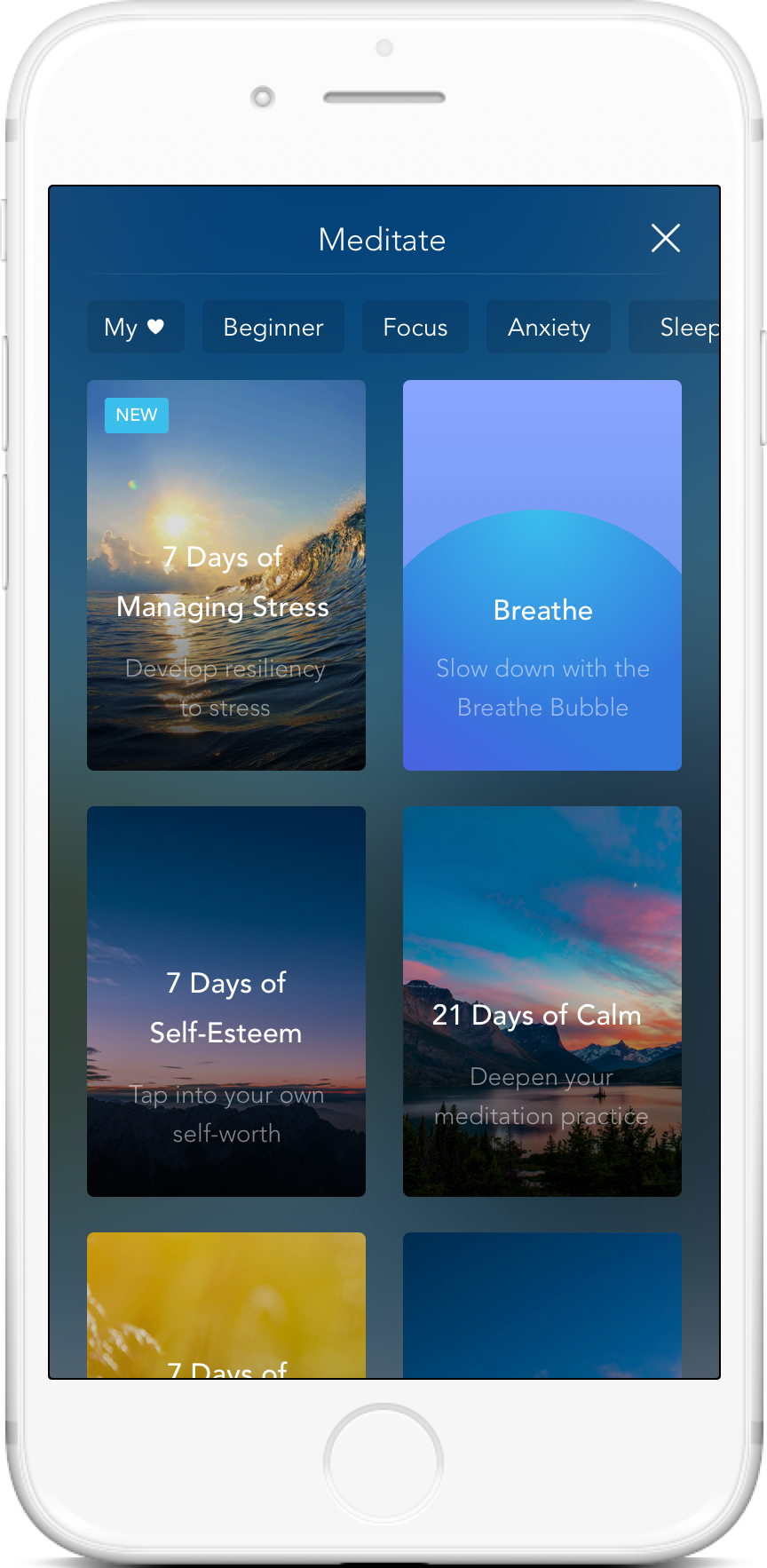
Calm and other mindfulness apps are not the only companies at play here. Indeed, the two largest direct owners of smartphone platforms — Apple and Google — this year announced a suite of tools geared toward trying to manage the amount of time users end up glued to their screens. While those are centered around helping users manage their time on their phones, it does show that even the largest companies in the world are increasingly aware of the potential negative effects their devices may have spawned from people spending all their time on their phones.
But by extension, Calm is not the only app where people can throw on some headphones and listen to a soothing voice with a British accent. Headspace is another obvious player in the space, having also raised a substantial amount of funding. Tew said the goal is to remain focused on simplicity, which in the end will keep people coming back over and over — and then end up continuing to drive that business.
“There was a lot of skepticism around Calm and this category as recently as a year ago,” Acton Smith said.” People were concerned that there was a lot of competition, and wondered whether people would really pay for this. We’ve quite convincingly shown we’ve answered all those questions with the growth we’ve had in our user numbers and our revenue. This is a successful business with very high margins and a huge addressable market. If you think about Nike, and the physical exercise boom being worth tens of billions, there’s no reason why mental wellness won’t be.”
Powered by WPeMatico
TechCrunch has learned that the Instagram longer-form video hub that’s launching tomorrow is called IGTV and it will be part of the Explore tab, according to multiple sources. Instagram has spent the week meeting with online content creators to encourage them to prepare videos closer to 10-minute YouTube vlogs than the 1-minute maximum videos the app allows today. Videos can range from 15 seconds to 60 minutes.
You can read our full post about the official IGTV launch here, and read about Instagram hitting 1 billion users.
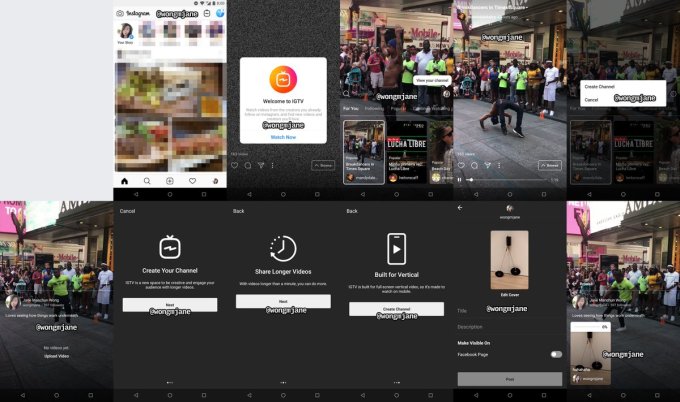
Instagram is focusing its efforts around web celebrities that made their name on mobile rather than more traditional, old-school publishers and TV studios that might come off too polished and processed. The idea is to let these creators, who have a knack for this style of content and who already have sizeable Instagram audiences, set the norms for what IGTV is about.
Instagram declined to comment on the name IGTV and the video hub’s home in app’s Explore tab.
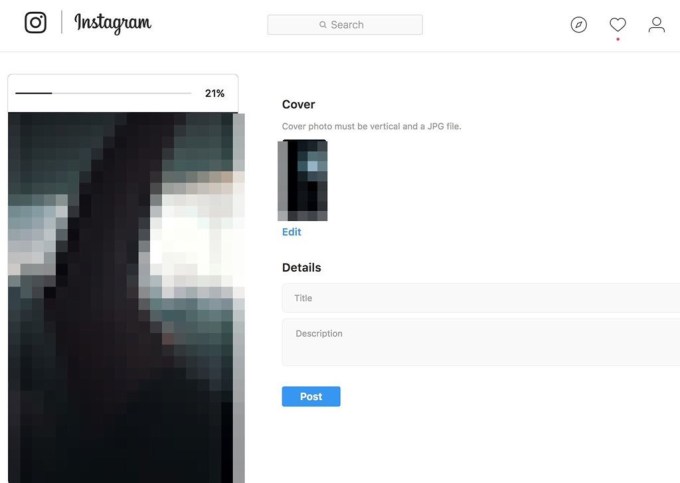
[Update 6/19/18 11pm pacific: A screenshot of the uploader for the new long-form video feature and more from Matt Navarra shows Instagram will allow clips between 15 seconds and 60 minutes.]
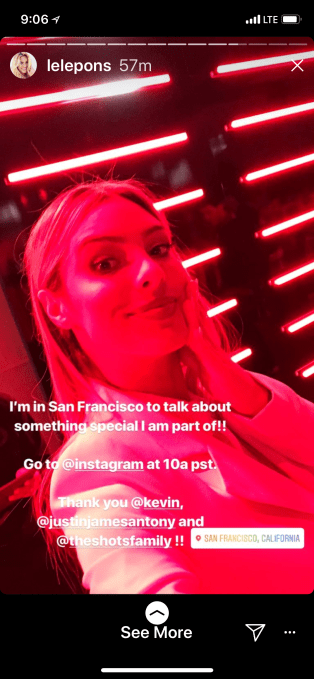
[Update 6/20/18 9:15am pacific: Instagram and YouTube celebrity Lele Pons posted that she’s part of a special Instagram announcement today at 10am pacific. This further backs up our report that today’s IGTV announcement is focused on creators.]
[Update 6/20/18 10:40am pacific: Leaked screenshots confirm Instagram is launching “IGTV” today. The images come courtesy of TechCrunch’s favorite app investigator Jane Manchun Wong. You can see more about how IGTV works above.]
We’ll get more information at the feature’s launch event in San Francisco tomorrow at 9am Pacific.
Following the WSJ’s initial report that Instagram was working on allowing videos up to an hour long, TechCrunch learned much more from sources about the company’s plan to build an aggregated destination for watching this content akin to Snapchat Discover. The videos will be full-screen, vertically oriented, and can have a resolution up to 4K. Users will be greeted with collection of Popular recent videos, and the option to Continue Watching clips they didn’t finish.
The videos aren’t meant to compete with Netflix Originals or HBO-quality content. Instead, they’ll be the kind of things you might see on YouTube rather than the short, off-the-cuff social media clips Instagram has hosted to date. Videos will offer a link-out option so creators can drive traffic to their other social presences, websites, or ecommerce stores. Instagram is planning to offer direct monetization, potentially including advertising revenue shares, but hasn’t finalized how that will work.
We reported that the tentative launch date for the feature was June 20th. A week later, Instagram sent out press invites for an event on June 20th our sources confirm is for IGTV.
Based on its historic growth trajectory that has seen Instagram adding 100 million users every four months, and its announcement of 800 million in September 2017, it’s quite possible that Instagram will announce it’s hit 1 billion monthly users tomorrow. That could legitimize IGTV as a place creators want to be for exposure, not just monetization.
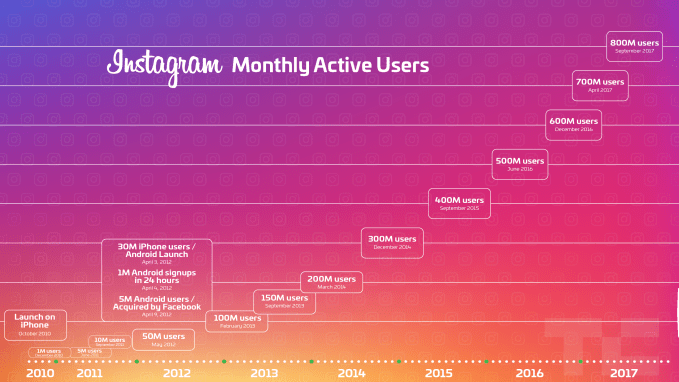
IGTV could create a new behavior pattern for users who are bored of their friends’ content, or looking for something to watch in between Direct messages. If successful, Instagram might even consider breaking out IGTV into its own mobile app, or building it an app for smart TVs
The launch is important for Facebook because it lacks a popular video destination since its Facebook Watch hub was somewhat of a flop. Facebook today said it would expand Watch to more creators, while also offering new interactive video tools to let them make their own HQ trivia-style game shows. Facebook also launched its Brand Collabs Manager that helps businesses find creators to sponsor. That could help IGTV stars earn money through product placement or sponsored content.
Until now, video consumption in the Facebook family of apps has been largely serendipitous, with users stumbling across clips in their News Feed. IGTV will let it more directly compete with YouTube, where people purposefully come to watch specific videos from their favorite creators. But YouTube was still built in the web era with a focus on horizontal video that’s awkward to watch on iPhones or Androids.
With traditional television viewership slipping, Facebook’s size and advertiser connections could let it muscle into the lucrative space. But rather than try to port old-school TV shows to phones, IGTV could let creators invent a new vision for television on mobile.
Powered by WPeMatico
Keepsafe, the company behind the private photo app of the same name, is expanding its product lineup today with the release of a mobile web browser.
Co-founder and CEO Zouhair Belkoura argued that all of Keepsafe’s products (which also include a VPN app and a private phone number generator) are united not just by a focus on privacy, but by a determination to make those features simple and easy-to-understand — in contrast to what Belkoura described as “how security is designed in techland,” with lots of jargon and complicated settings.
Plus, when it comes to your online activity, Belkoura said there are different levels of privacy. There’s the question of the government and large tech companies accessing our personal data, which he argued people care about intellectually, but “they don’t really care about it emotionally.”
Then there’s “the nosy neighbor problem,” which Belkoura suggested is something people feel more strongly about: “A billion people are using Gmail and it’s scanning all their email [for advertising], but if I were to walk up to you and say, ‘Hey, can I read your email?’ you’d be like, ‘No, that’s kind of weird, go away.’ ”
It looks like Keepsafe is trying to tackle both kinds of privacy with its browser. For one thing, you can lock the browser with a PIN (it also supports Touch ID, Face ID and Android Fingerprint).
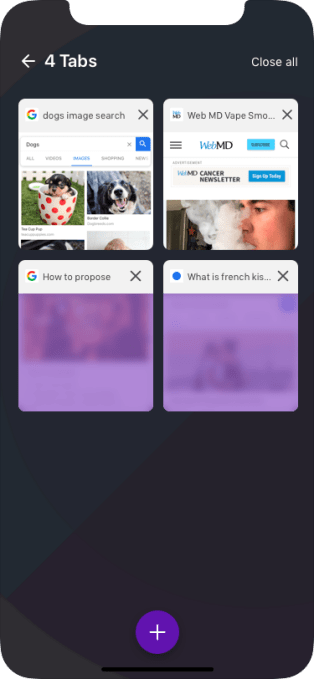
Then once you’re actually browsing, you can either do it in normal tabs, where social, advertising and analytics trackers are blocked (you can toggle which kinds of trackers are affected), but cookies and caching are still allowed — so you stay logged in to websites, and other session data is retained. But if you want an additional layer of privacy, you can open a private tab, where everything gets forgotten as soon as you close it.
While you can get some of these protections just by turning on private/incognito mode in a regular browser, Belkoura said there’s a clarity for consumers when an app is designed specifically for privacy, and the app is part of a broader suite of privacy-focused products. In addition, he said he’s hoping to build meaningful integrations between the different Keepsafe products.
Keepsafe Browser is available for free on iOS and Android.
When asked about monetization, Belkoura said, “I don’t think that the private browser per se is a good place to directly monetize … I’m more interested in saying this is part of the Keepsafe suite and there are other parts of the Keepsafe Suite that we’ll charge you money for.”
Powered by WPeMatico
Facebook wants to help connect brands to creators so they can work out sponsored content and product placement deals, even if it won’t be taking a cut. Confirming our scoop from May, Facebook today launched its Brand Collabs Manager. It’s a search engine that brands can use to browse different web celebrities based on the demographics of their audience and portfolios of their past sponsored content.
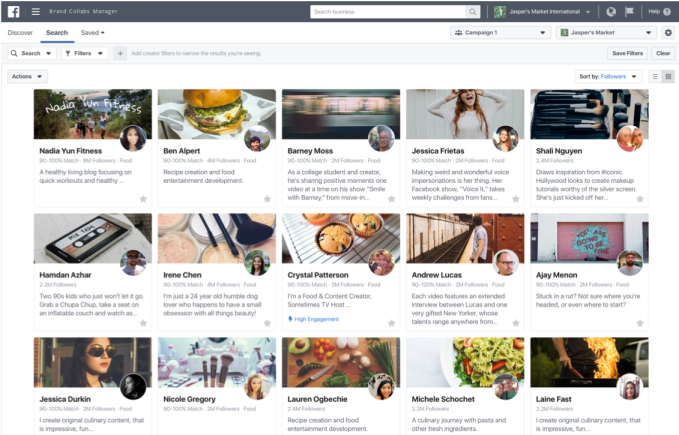
Creators hoping to score sponsorship deals will be able to compile a portfolio connected to their Facebook Page that shows off how they can seamlessly work brands into their content. Brands will also be able to find them based on the top countries where they’re popular, and audience characteristics like interests, gender, education, relationship status, life events or home ownership.
Facebook also made a wide range of other creator monetization announcements today:
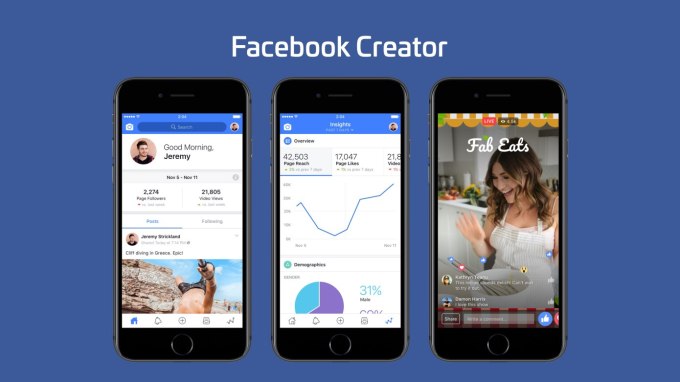
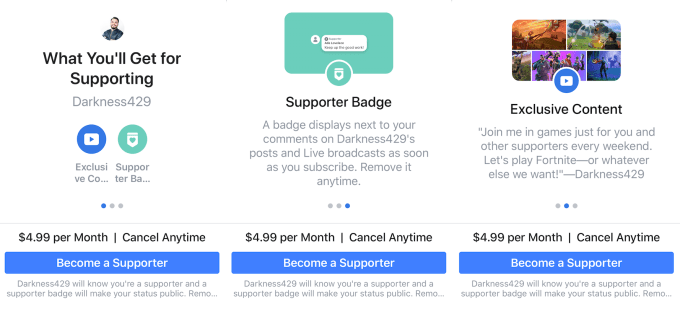
Facebook also made a big announcement today about the launch of interactive video features and its first set of gameshows built with them. Creators can add quizzes, polls, gamification and more to their videos so users can play along instead of passively viewing. Facebook’s Watch hub for original content is also expanding to a wider range of show formats and creators.
Facebook needs the hottest new content from creators if it wants to prevent users’ attention from slipping to YouTube, Netflix, Twitch and elsewhere. But to keep creators loyal, it has to make sure they’re earning money off its platform. The problem is, injecting Ad Breaks that don’t scare off viewers can be difficult, especially on shorter videos.
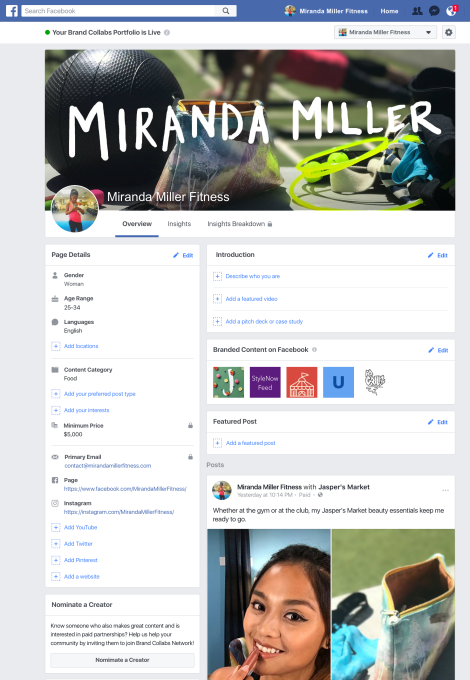 But Vine proved that six seconds can be enough to convey a subtle marketing message. A startup called Niche rose to arrange deals between creators and brands who wanted a musician to make a song out of the windows and doors of their new Honda car, or a comedian to make a joke referencing Coca-Cola. Twitter eventually acquired Niche for a reported $50 million so it could earn money off Vine without having to insert traditional ads. [Disclosure: My cousin Darren Lachtman was a co-founder of Niche.]
But Vine proved that six seconds can be enough to convey a subtle marketing message. A startup called Niche rose to arrange deals between creators and brands who wanted a musician to make a song out of the windows and doors of their new Honda car, or a comedian to make a joke referencing Coca-Cola. Twitter eventually acquired Niche for a reported $50 million so it could earn money off Vine without having to insert traditional ads. [Disclosure: My cousin Darren Lachtman was a co-founder of Niche.]
Vine naturally attracted content makers in a way that Facebook has had some trouble with. YouTube’s sizable ad revenue shares, Patreon’s subscriptions and Twitch’s fan tipping are pulling creators away from Facebook.
So rather than immediately try to monetize this sponsored content, Facebook is launching the Brand Collabs Manager to prove to creators that it can get them paid indirectly. Facebook already offered a way for creators to tag their content with disclosure tags about brands they were working with. But now it’s going out of its way to facilitate the deals. Fan subscriptions and tipping come from the same motive: letting creators monetize through their audience rather than the platform itself.
Spinning up these initiatives to be more than third-rate knockoffs of Niche, YouTube, Patreon and Twitch will take some work. But hey, it’s cheaper for Facebook than paying these viral stars out of pocket.
Powered by WPeMatico
Rather than build its own HQ trivia competitor, Facebook is launching a gameshow platform. Today the company announced a new set of interactive live and on-demand video features that let creators add quizzes, polls, challenges and gamification so players can be eliminated from a game for a wrong answer. The features could help Facebook achieve its new mission to push healthier active video consumption rather than passive zombie watching that hurts people’s well-being. Creators and publishers who want early access can sign up here.
Gameshow launch partners include Fresno’s What’s In The Box, where viewers guess what’s inside, and BuzzFeed News’ Outside Your Bubble, where contestants have to guess what their opponents are thinking. Plus, Facebook is testing the ability to award prize money with (Business) INSIDER’s Confetti, where viewers answer trivia questions and can see friends’ responses, with winners splitting the cash.
“Video is evolving away from just passive consumption to more interactive two-way formats,” Facebook’s VP of video product Fidji Simo tells TechCrunch. “We think creators will want to reward people. If this is something that works with Insider and Confetti, we may consider rolling out payments tools.”

When asked if Facebook was inspired by HQ, Simo repeatedly dodged the question and avoided mentioning the startup’s name, but relented in saying, “I think they’re part of a much broader trend that is making content interactive. We’ve seen that across much more than one player.”
Facebook won’t be taking a share of the prize money in this test. For now, it’s also forgoing its cut of its $4.99 per month subscriptions option that lets fans pay for exclusive content, which rolls out today to more creators. Facebook also just launched its Brand Collabs Manager that we scooped in May, which helps brands browse creators by demographic and portfolio so they can set up sponsored content and product placement deals.
Initially Facebook is not taking a cut there either. For all three of these features, though, Simo says “that doesn’t mean we never will.” Creators can sign up for these monetization options here.
The new interactive video features will be available to all publishers and creators, alongside the global launch of the Android version of Facebook’s Creator app for web celebs. The tools range from offering basic in-video polls to creating a full trivia gameshow. Creators will be able to write out their trivia questions and designate correct answers, as well as “write down the logic of the game,” says Simo.
While polls will work for Live and on-demand videos, gamification that impacts the outcome of the broadcast is only for Live. Brent Rivera and That Chick Angel are two creators who will be testing the features in the coming weeks. Facebook already found that fans enjoyed polling on its Watch show Help Us Get Married, which let viewers influence the wedding planning decisions about themes and the venue.
Facebook’s last attempt at original video, its Watch hub, saw mediocre adoption as the content felt also-ran rather than something special or must-see. That’s why Facebook is expanding Watch to offer a broader range of shows for more creators, including potentially longer or non-episodic content. That includes bringing Facebook videos originally only hosted on Pages into the Watch destination.
Facebook’s family of apps will get another chance at an original video home run when Instagram launches its long-form video hub tomorrow, according to TechCrunch’s sources.
What we’re seeing here is positioning that diverges Facebook and Instagram’s video efforts. Facebook’s might be more interactive, about playing and watching with friends, and embrace more novel new formats like mobile gameshows. Instagram, with its history of polished photos, could house more traditional high-end entertainment content.
“We’re not trying to do one show or one trivia game. We’re trying to get every creator to create such gameplay. The beauty of the creators space is that they each have a unique audience,” Simo tells me. With 2.2 billion users, making an in-house one-size-fits-all game may have been impossible.
Powered by WPeMatico